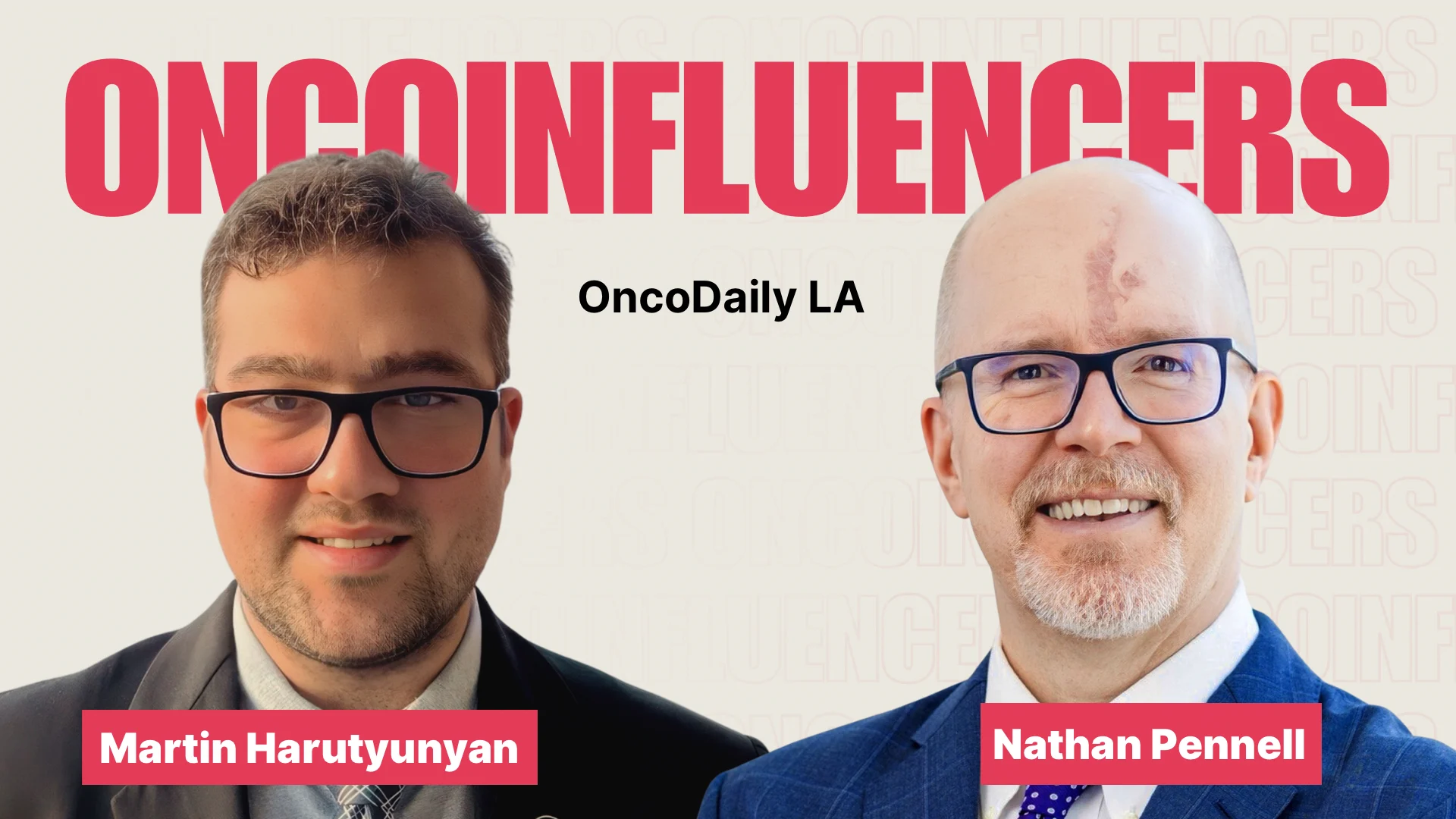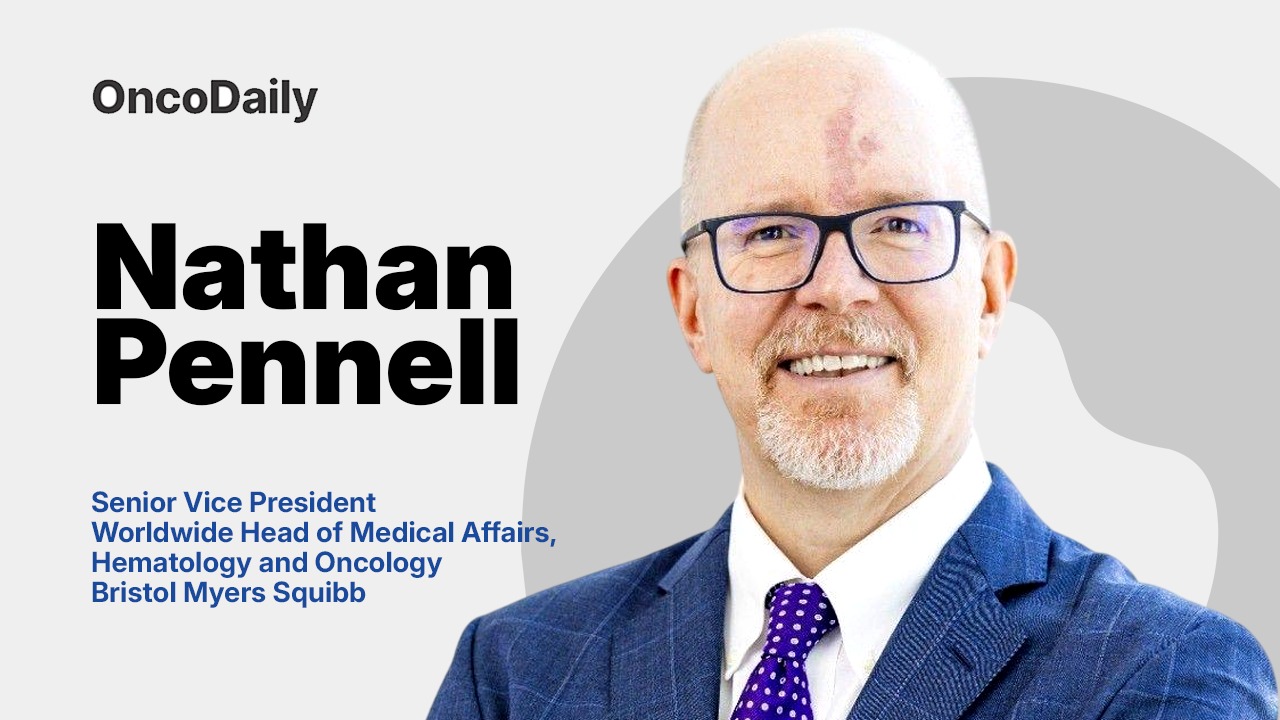How a clinician‑scientist translated a personal loss and a molecular breakthrough into a career that now shapes worldwide oncology strategy, focused on biomarker‑driven care, responsible innovation, and making sure scientific progress reaches real patients.
A family loss and a moment that changed everything
Nathan Pennell did not plan to become an oncologist. With a PhD in neuroscience, he went into medical school thinking neurology would be his path. Clinical rotations changed that. “
“I ended up not liking neurology as much. “Oncology’s science was incredibly exciting, and the relationships with patients felt unique and deeply meaningful.”
That professional pull was anchored by personal loss. Lung cancer had already touched his family; his mother and both maternal grandparents died from the disease. During his fellowship at Massachusetts General Hospital, he worked with a team behind the early report linking EGFR mutations to targeted response in lung cancer. Seeing drugs like erlotinib and gefitinib produce dramatic benefit in biomarker-defined patients was a turning point.
“When I saw what those drugs could do in EGFR positive disease, I thought, ‘wow, this is how we’re eventually going to end up curing cancer,’”
He remembers. This blend of rigorous science and real human stakes would define his career, patient focus, biomarker precision, and a steady drive to move discoveries into everyday care.
Early path: Why the clinic became his compass
Pennell’s training gave him a scientific foundation, but the clinic set his compass. He noticed early on that people react strongly to oncology; they either gravitate toward it or avoid it. He gravitated. For him the work was never just about tests and protocols; it was about long relationships, repeated conversations about risk and values, and the duty to translate complex science into decisions that matter. That ethic, pairing bench insights with bedside responsibility, stayed with him as he moved into fellowship, academic practice, and clinical leadership.
Building a program: Cleveland Clinic and the biomarker era
At the Cleveland Clinic Taussig Cancer Institute, Pennell led the Lung Cancer Medical Oncology Program through a period when lung cancer practice fundamentally changed. Molecular testing moved from optional to standard. Trials were designed around genetic alterations and rare fusions rather than just tumor type. Treatments that once offered small benefits became life-altering for selected patients. He focused on designing trials that asked useful questions, mentoring teams to interpret molecular reports, and helping clinical workflows adapt to faster, more precise therapies.
“It wasn’t just about triumphs,” he says.
The leap to BMS: Scaling impact from thousands to millions
After many years in academic leadership, Pennell reached an inflection point. He felt he had taken his program as far as he could in that setting and started asking where he could have the largest impact. The role at Bristol Myers Squibb, Senior Vice President and Head of Global Medical Oncology, arrived just as he was ready to widen the aperture.
“This job allows me to have a much bigger impact worldwide on patients with cancer,”
He says. Industry offered scale, the chance to influence development, evidence generation, and global access for therapies that could reach many more people than a single center could.
Timing mattered. As he considered the offer, BMS announced a partnership around a VEGF PD-L1 bispecific antibody. The program felt reminiscent of the early days of checkpoint therapy, an opportunity to shape how a promising mechanism moves through trials, combinations, and regulatory paths. That potential to influence strategy from the start was a major draw.
He joined knowing the first months would be about learning, understanding medical affairs structure, meeting global teams, and translating clinician experience into strategy. His early priorities were practical: learn quickly, bring a clinician perspective to trial and evidence planning, and help position the organization to move promising science toward patients efficiently and responsibly.
Leading oncology medical affairs: Priorities and approach
Pennell arrived in a role that sits at the intersection of evidence generation, physician engagement, and program translation. His leadership approach is clinician-centered and execution minded.
- Put the clinician voice at the center of decisions about trials, endpoints, and communications.
- Make medical affairs the translator between complex science and practical use in the clinic.
- Ensure evidence generation plans address real-world questions clinicians and patients face.
A flagship priority has been working on the bispecific program. He treats the platform as a complex multi-indication development puzzle: biology, sequence of combinations, regulatory strategy, and pragmatic implementation. Medical affairs must help anticipate how signals translate into practice and how to generate evidence that clinicians trust.
Innovation and pipeline: What matters for patients now
Nathan Pennell’s view of innovation is rooted in patient benefit. Across BMS’s portfolio, he highlights three areas of focus.
- New immuno-oncology combinations that pair VEGF/angiogenesis inhibition with PD-L1 blockade to extend and deepen responses for more patients.
- Precision therapies that remain tied to biomarkers, carefully selecting populations.
- Hematology advances, including next-generation targeted protein degradation approaches and next-generation cell therapy approaches that show promise in hard-to-treat blood cancers.
He stresses disciplined development, including patients who resemble real practice populations, picking endpoints that matter to people living with cancer, and communicating results in a way clinicians can act on immediately.
ESMO and the pace of change: From talks to operational work
At ESMO and other major meetings, Nathan Pennell noticed a changed rhythm in his new role. Conferences were no longer only educational; they were operational. Much of his time was spent in working sessions, conversations with investigators, and cross-functional meetings aimed at turning presentations into coordinated programs.
“The pace of change is incredible, but change only matters if we can move knowledge into care.”
This broader scope, from thoracic focus to all of hematology and oncology, is humbling and energizing. Cross-disease learning matters, approaches that work in one indication can inspire strategy in another, and operational playbooks can scale across regions when thoughtfully adapted.
Blended innovation: Why public research funding matters
Nathan Pennell is clear that public funding for basic science is essential. He describes oncology progress as an ecosystem, discovery in academia, validation in small biotech, and scale in industry. “Anything that reduces funding for basic medical research makes breakthroughs harder,” he says.
Industry research sits on a foundation of basic science that comes from a productive public-private partnership that includes federally funded agencies and academia. Under his leadership, BMS aims to partner with nonprofits, support investigator-initiated studies, and back efforts that improve access and diversity in trials. Protecting the whole integrated ecosystem, including federal funding, academic infrastructure, biotech dynamism, and industry scale, is a shared responsibility.
Advice for early‑career oncologists: Try on different coats
Nathan Pennell’s career advice is straightforward and memorable: try on different roles. He borrows a metaphor from a colleague: careers are like coats, you will not know the fit until you try it on. Too many clinicians tolerate poor fits because medicine rewards compliance. He urges trainees to experiment early and try short immersive projects, committee work outside the day job, secondments in industry or startups, or a summer at a lab or company.
Protect academic paths when needed, but do not be afraid to explore biotech, pharma, or AI ventures. On the horizon, artificial intelligence will reshape workflows, he has seen AI scribes dramatically reduce the time spent on notes, freeing clinicians to talk more with patients. The future demands adaptability and curiosity.
Work‑life harmony: Rituals that sustain the work
Nathan Pennell rejects the idea of perfect balance. He prefers work-life harmony, allowing priorities to swing while keeping steady anchors. He enjoys his work and wants to sustain intensity long term. His anchors are simple: Peloton sessions, runs that clear his head, music that settles the day, and weekends dedicated to his son’s soccer games and French horn recitals. These small rituals keep the global tempo human. “Do it with intensity, then be fully present with family,” he says.
Passing the mic: Whose voice matters next?
When asked who OncoDaily should interview next, Nathan Pennell recommended Narjust Florez from Dana-Farber, a rising leader in lung cancer equity and patient advocacy. The suggestion reinforces his broader point that scientific advances must be matched by leaders who prioritize access, representation, and the practical translation of breakthroughs into care that reaches diverse populations.
Nathan Pennell believes the best science is the kind that changes bedside decisions. His move from directing a lung cancer program to leading Global Medical Oncology at Bristol Myers Squibb is about widening that circle of impact while keeping patients at the center.
Interview by Dr. Martin Harutyunyan, Director of OncoDaily LA

